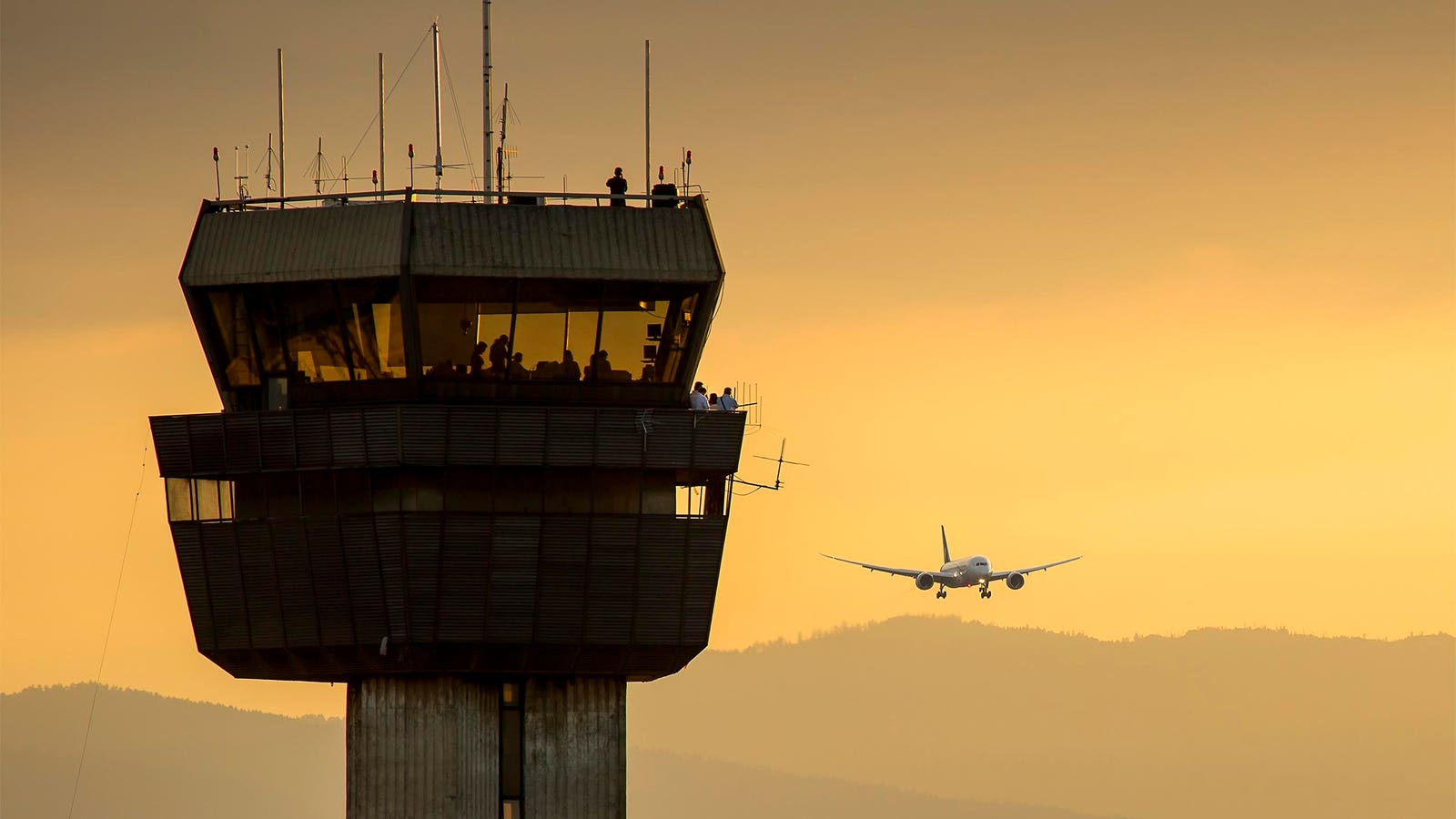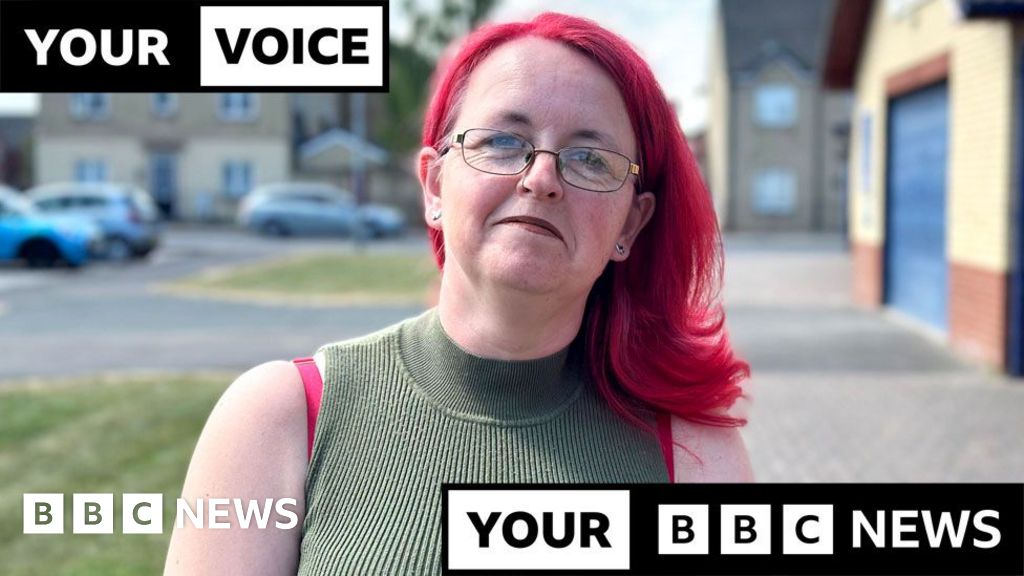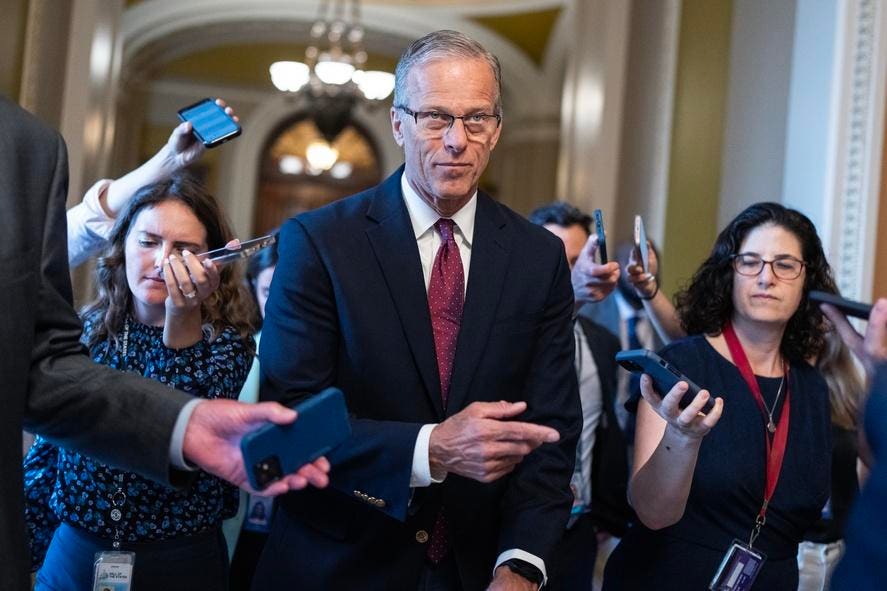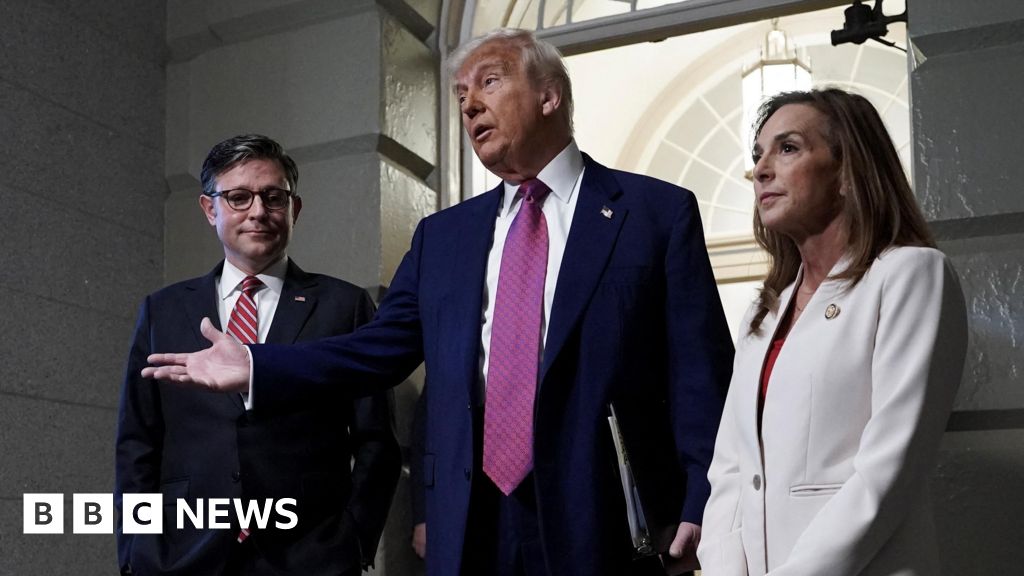Topline
President Donald Trump and Transportation Secretary Sean Duffy have repeatedly blamed the Biden administration for not fixing the country’s battered air traffic control system—when multiple administrations, including his own, have failed to get the job done.
After decades of kicking the FAA’s can down the road, there’s plenty of blame to go around in … More Washington.
Key Facts
Since the start of Trump’s second term, U.S. aviation has experienced a series of alarming incidents—including the midair collision in January of an American Airlines regional jet and an Army Black Hawk helicopter that killed 67 people near Reagan National Airport in Washington, D.C., a string of near misses and runway incursions and multiple equipment outages at several airports that caused air traffic controllers to lose contact with aircraft they were guiding.
Trump and Duffy have repeatedly blamed their immediate predecessors for the FAA’s troubles, but the agency’s antiquated technology and ongoing air traffic controller shortage go back decades and multiple administrations.
The recent chaos at Newark Airport can be traced back to a “terrible idea” during Trump’s first term to move control of Newark airspace from New York to Philadelphia, according to a CNN report Thursday that cites multiple current and former air traffic controllers.
Who Is To Blame For The Recent Chaos At Newark Airport?
Four equipment outages in the past month have left controllers overseeing traffic at Newark Liberty International Airport unable to contact planes. “The blame belongs with the last administration,” Duffy said at a news conference earlier this month, adding his predecessor, Pete Buttigieg, and former President Joe Biden “did nothing to fix the system that they knew was broken.” Duffy accused “the Biden-Buttigieg administration” of having “bungled” the move of Newark’s air traffic control from New York to Philadelphia by failing to properly harden the telecom lines feeding flight data between the control facilities. But internal FAA documents reviewed by CNN reveal the plan had been initiated and was substantially underway during the first Trump administration, including an engineering plan completed just one month before the 2020 election. Following weeks of chronic flight delays at the New Jersey airport, the FAA announced plans this week to reduce flight capacity in order to “find a balance between reducing their operations at the airport and meeting the needs of each individual airline.”
Who Is To Blame For The Midair Collision At Reagan National Airport In January?
The National Transportation Safety Board (NTSB) is not expected to release its final report on the fatal midair crash until early 2026. But tea leaves from the agency’s preliminary report, released in March, seem to point in two clear directions. The report called for a permanent ban on helicopters near Reagan National when two key runways are in use. Helicopters around the airport “pose an intolerable risk to aviation safety,” NTSB chairperson Jennifer Homendy told reporters. Homendy also sharply criticized the FAA for failing to spot a disturbing pattern of close encounters between helicopters and commercial aircraft near the busy capital airport. An analysis by her agency found that, over a 13-year period, commercial planes were receiving alerts of being too close to a helicopter at least once per month. Homendy said “there clearly were indicators” the FAA had ignored and noted the NTSB had recognized the pattern simply by analyzing the FAA’s own data. “We missed something at DCA (the airport code for Reagan National),” Frank McIntosh, the FAA’s deputy chief operating officer for Air Traffic Organization, acknowledged at a recent Senate hearing on FAA reauthorization, adding the agency needed “better analysis of our data trends.”
Chief Critic
“The FAA has always been reactive, not proactive,” Mary Schiavo, former inspector general of the Department of Transportation, told Forbes. “They wait around until something happens, and then they scramble to try to act like they’re on top of it. The FAA’s job is to look at the actual statistics and the trends. What we learned after the DCA crash, because the NTSB told us, is that the FAA is not looking at the data and the trends.”
Key Background
The FAA’s two major problems—antiquated technology and a persistent air traffic controller shortage—have dogged five administrations over more than two decades, with the administrations of George W. Bush, Barack Obama, Donald Trump and Joe Biden failing to fix the problem. In 2003, the Bush administration announced the FAA’s NextGen system—a modernization effort designed to transition the nation’s ground-based air traffic control system to one that uses satellite navigation, automated position reporting and digital communications—but it got mired down by budgetary challenges and Washington’s culture of incrementalism and kicking the can. A November 2023 report from an independent FAA panel found the system was so old that it was difficult to obtain spare parts. Last September, the Government Accountability Office, an independent, non-partisan agency that works for Congress, reported 51 of the FAA’s 138 air traffic control systems are unsustainable.
What Is The Faa Doing To Fix Its Problems—and How Long Will It Take?
Earlier this month, the Department of Transportation announced a plan to replace the United States’ aging air traffic control system with new fiber, wireless and satellite technologies while equipping controllers with new radar, radios and voice switches. Duffy said the rebuild would happen “in three to four years” provided that Congress allocates tens of billions of dollars, noting, “we need all of the money up front.” The agency will roll out improvements in stages and prioritize facilities “based on needs,” McIntosh clarified at the Senate hearing on FAA reauthorization.
Did Sean Duffy Vote To Fund The Faa When He Was In Congress?
Almost always. Duffy, who served in the House from 2012 to 2019, voted for bills reauthorizing FAA funding in 2012 and 2014, during the Obama administration, as well as in 2018, during the first Trump administration. In 2019, during the country’s longest government shutdown, Duffy voted against a transportation and housing appropriations bill that would have provided funding for the FAA but also included many provisions unrelated to air traffic control. The National Air Traffic Controllers Association (NATCA), a union representing 20,000 air traffic controllers and other aviation safety professionals, supported the bill. Trump opposed the bill. The House passed HR 267, with 232 Democrats and 12 Republicans in favor and 180 Republicans, including Duffy, opposed. The Republican-majority Senate, then led by Mitch McConnell of Kentucky, declined to take it up.
Tangent
NATCA has warned of a shortage of fully certified controllers for over a decade, as staffing was hampered by repeated government shutdowns and the COVID-19 pandemic, but the FAA is still short 3,000 controllers. In February, Duffy announced a “hiring supercharge” at the agency, including increasing starting pay for air traffic controllers and reducing the number of steps necessary to hire and certify controllers. Since it takes three to four years to fully certify an air traffic controller, there is no quick fix. McIntosh said the FAA has 3,100 trainees in the pipeline and will “finally start getting traction this year where we outpace attrition, and then we’ll start seeing, over the next 18 to 24 months, where we actually see a positive gain in the controllers.”
Further Reading
Newark Airport Crisis: FAA Announces Upgrade Plan For Communication System (Forbes)










